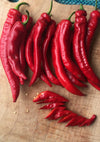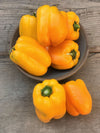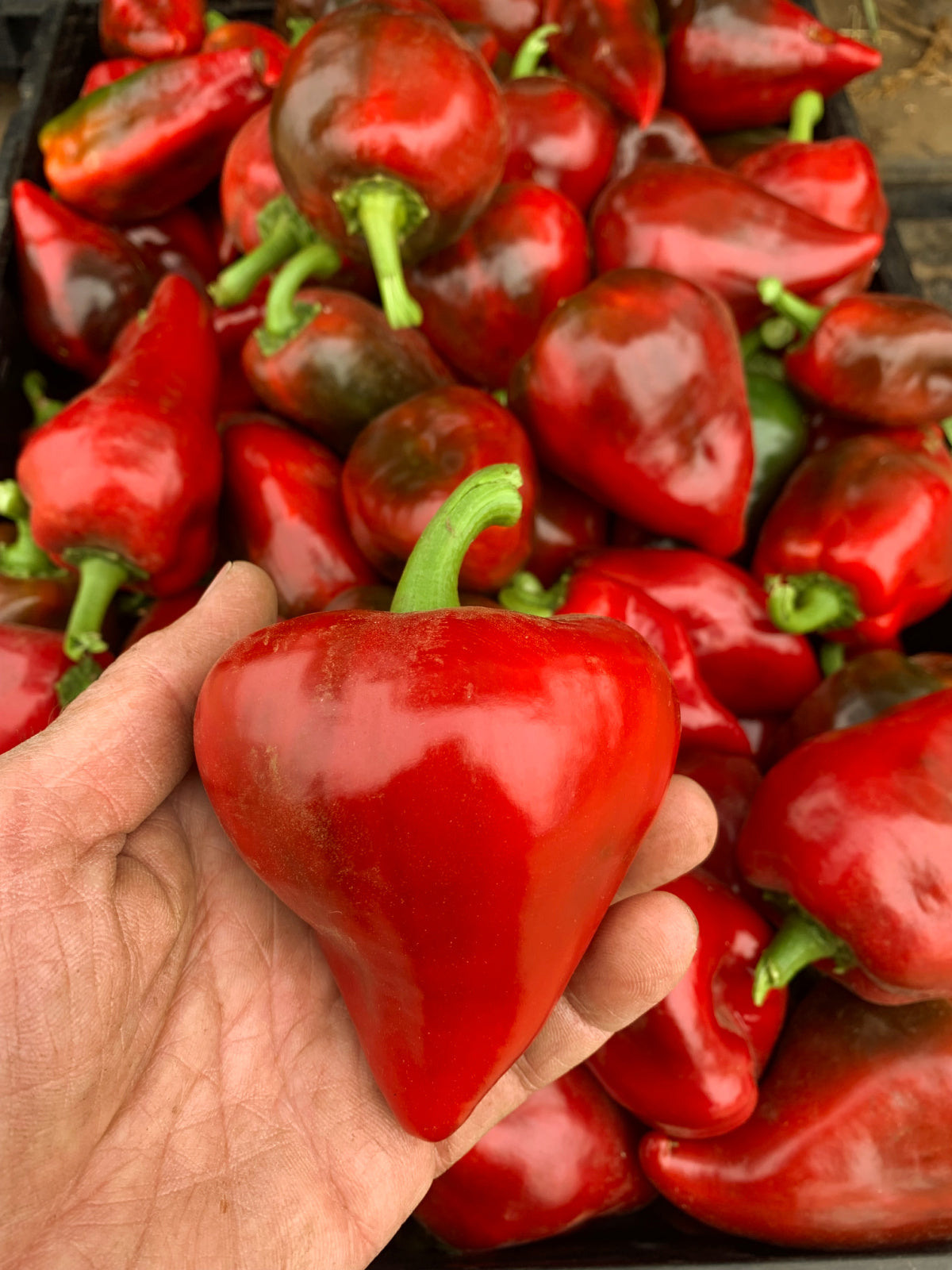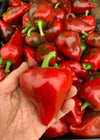Sweet Pepper, 'Lesya'
(Capsicum anuum) A variety native to Ukraine, 'Lesya' was an absolute knockout for us a few years back, hanging heavy with thick-walled, sweet fruits perfect for roasting or eating raw. The shape is adorable: plump and round with a protruded, pointy blossom end. Look up this variety online and you will find a myriad of claims that it is "the sweetest pepper in the world". We won't make that claim (I'm not sure why people feel the need to, as they create unrealistic expectations), but there is no doubt that Lesya is a very sweet and delicious pepper. It is quite remarkable in its productivity, and we recommend staking to provide support. Originally developed and released by the Bilous family from the village of Prysluch (about halfway between Kyiv and Lviv in western Ukraine).
90 days. UO, AV
Packet: 30 seeds
Product Code: PEP-LY-pkt
Availability:In stock
| Translation missing: en.products.general.options | Translation missing: en.products.general.qty | Translation missing: en.products.general.qty |
|---|---|---|
|
$4.50 |
||
|
Out of stock |
$8.00 |
|
|
Out of stock |
$14.00 |
|
|
Out of stock |
$40.00 |
Growing Info
SOWING:
Indoors, 6-8 weeks before your last frost date.
Transplant out after danger of frost (50+ nighttime temps).
Note: Protect well from the cold!
PLANTING DEPTH:
1/4"
SPACING:
12-24" spacing in rows 24-36" apart.
EMERGENCE:
7-14 days @ soil temp 70-85F
LIGHT:
Full sun
FERTILITY:
Moderate-Heavy. Prefer well-drained, fertile soil with ample phosphorous and calcium (too little calcium can cause blossom end rot) and a pH between 6.5-6.8.
ADDITIONAL NOTES:
Pepper seeds germinate very slowly and poorly in cold soil. Keep soil temperatures at 80-90F while germinating, and grow plants at 70F.
After transplanting, use a floating row cover to keep plants warmer during the day and protect them from cold nights. Remove as temperatures increase. Too much heat can cause blossom drop.
Taller varieties benefit from staking.
Harvesting ripe fruit consistently encourages fruit production.




